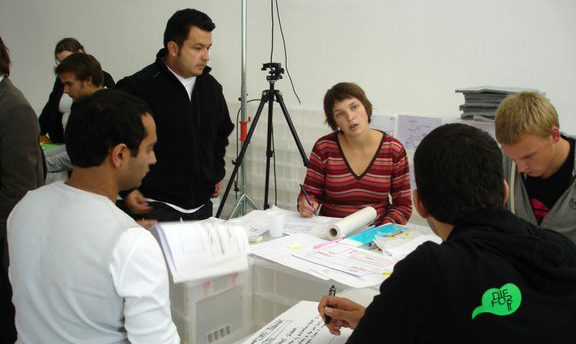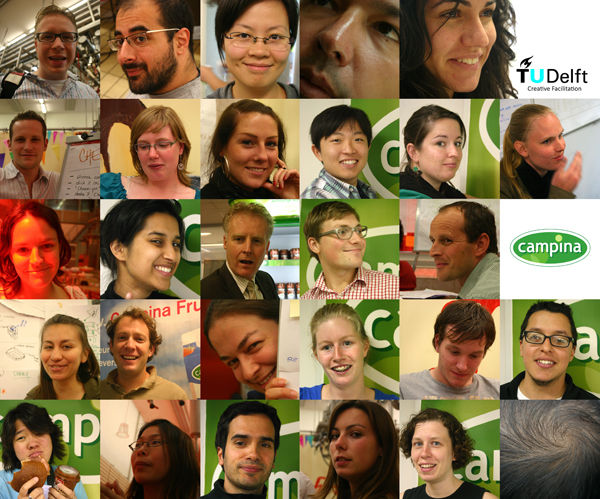Blog
Creative session (part 2): Future faculty workshop
After the fire in the Architectural building (TUDelft 2008) the association of students Stylos[1] arranged two activities in order to progress in the International competition to design the new building of the faculty. The starting point was the kickoff of the competition at Delft, including creative sessions to create the basic concept for the competition. After that the association arranged the international creative session in the 11 Mostra Internazionale di Architettura, La Biennale di Venezia at Venice, Italy.
International creative session in the 11 Mostra Internazionale di Architettura.
 Name: Concept for the new Faculty of Architecture TUDelft.
Name: Concept for the new Faculty of Architecture TUDelft.
Date: 11/09/2008 till 13/09/2008.
Duration: 3 days.
Place: 11 Mostra Internazionale di Architettura, La Biennale di Venezia at Venice, Italy.
Leader (facilitator): Ricardo Mejia S.
Client: Academic Stylos / Faculty of Architecture TUDelft.
Problem owner: Faculty of Architecture TUDelft.
Participants: not available.
Consultancy (part 1): Ergo-ecology and other technicalities…
This project is an interesting example of cooperation between the University and industries in Latin America. The research project was conducted in the Industrial Design Department at the Pontificia Universidad Javeriana in Bogota Colombia. The concept of Ergoecology (G.García, P.Romero, & M.H.Saravia, 1997) was developed as a proposal to integrate evaluation and intervention processes generally used in ergonomics and environmental management systems. Ergoecology, as scientific and technological discipline, looks forward ”-from a systemic focus-, to take care of studying the human being and its relationships with the environment -through its activities (work)- to establish, analyze, reduce, prevent, control and rectify the impacts (positives and negatives) that derive from such a relationship”.
Creative session (part 3): Campina
Creative Facilitation is about setting up and leading creative processes in product innovation teams[1]. The course Creative Facilitation contents describe the role of the facilitator as a leader of a creative team during a “Creative Session” in order to achieve a specific goal. For that process the course provides some theoretical reflections, including lectures, readers and discussions about techniques of design, lead and participate in creative processes.
Starting with theory, the course moved into guided exercises which gradually grow in complexity and scope (Delft University of Technology, 2007). Including other activities in the end of the course the student has a totally of two creative sessions, one as an internal session and the other as an external one. In my particular case I had a previous experience using some basic methods of creativity, like brainstorming and lateral thinking, including mind maps and some ice breakers but the course was an excellent exercise to grow in the comprehension of how this methods and other more can improve the quality of the new product development processes.
[nggallery id=11]
[1] (Delft University of Technology, 2007)
Javier Ricardo Mejia Sarmiento
Creative session (part 4): Twingo, the new generation of Renault
Name: New experiences for Twingo 2022.
Date: 22/05/2008.
Duration: 2 hours.
Place: TUDelft Studio 6 / IDE Faculty.
Leader (facilitator): Ricardo Mejia S
Body: Gregorio Muraca
Client: Academic exercise of Automotive Design / Renault
Problem owner: Ricardo Mejia & Marc-Peter Kooistra
Participants: Daniel Moreno, Jelmer Lakerveld, Ling Fong Low, Arjan Kodstra and Riekes Beelen
The goal of the session was created a new experience for the car interior; answering the question: How is possible live an uplifting experience in a Twingo 2022?. Based on the (minor assignment form Automotive Design course at TUDelft) deconstruction of the interior and exterior of the Renault Twingo 2007 the team based on Vision in Product Design (Hekkert and Dijk TUDelft 1997) defined three starting points to work in the design phase:
Design is about possible futures, ViP is interaction centered and ViP is context-driven.


